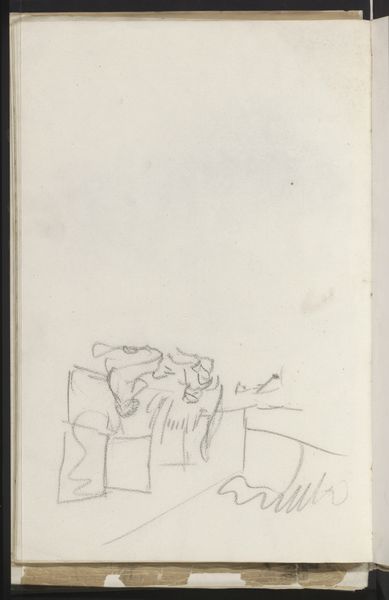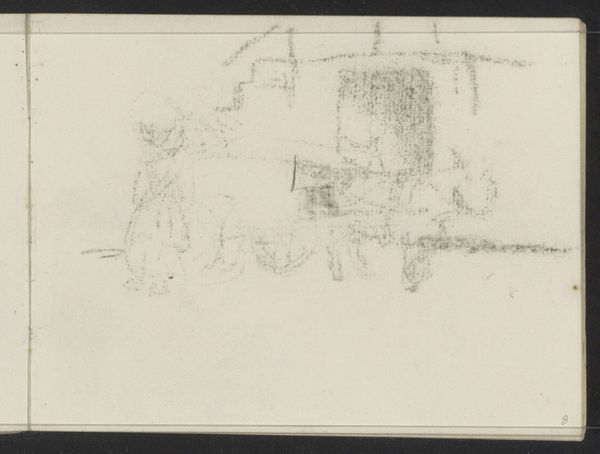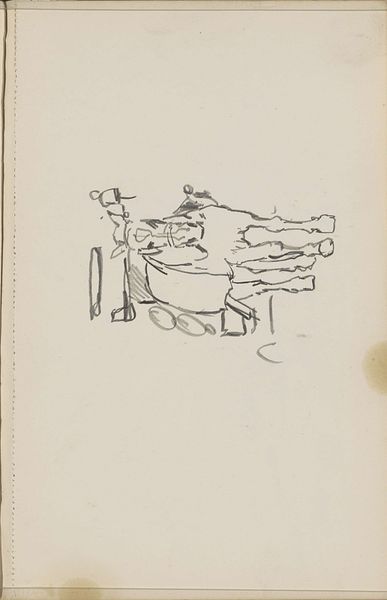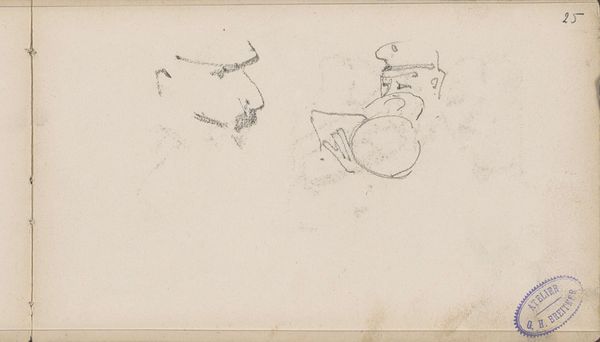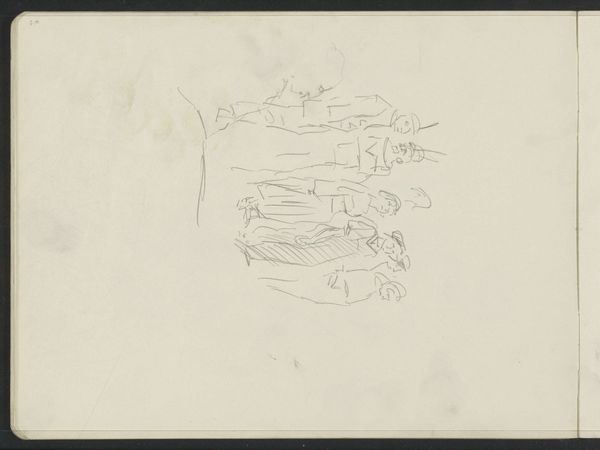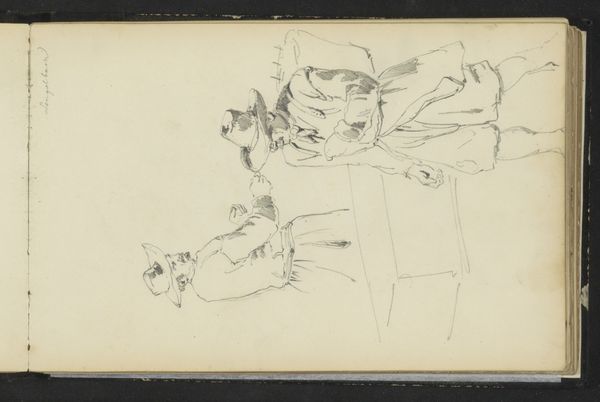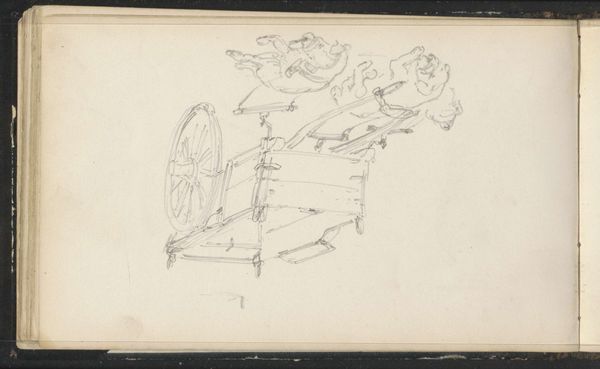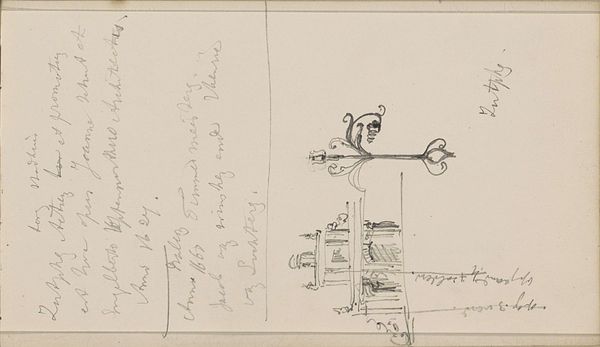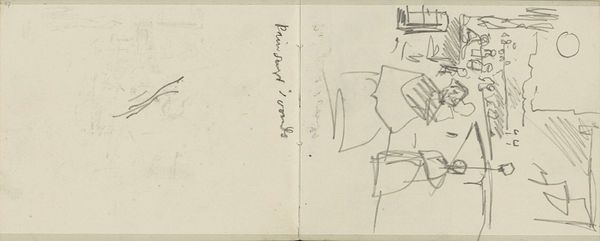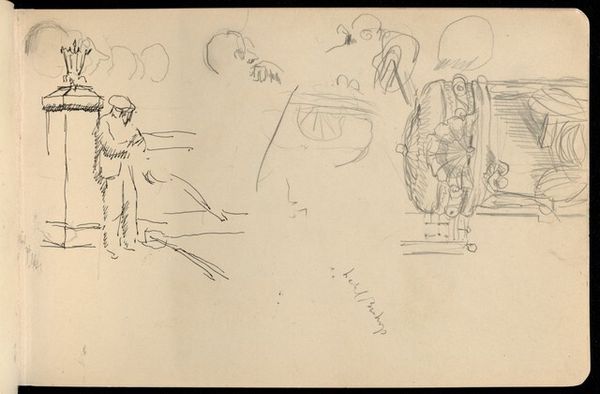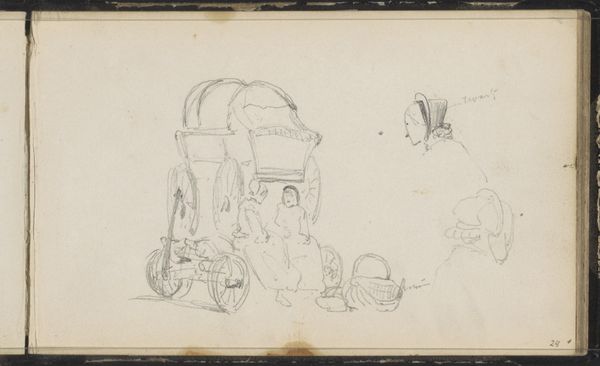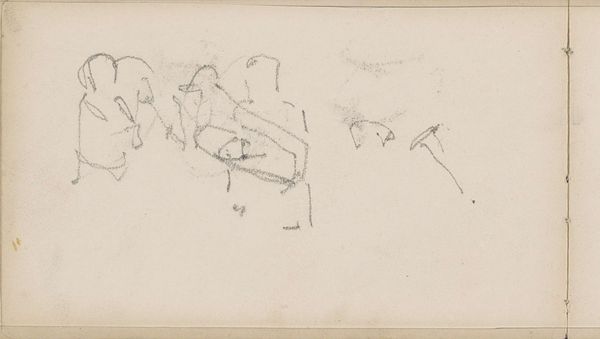
drawing, pencil
#
drawing
#
aged paper
#
toned paper
#
quirky sketch
#
sketch book
#
figuration
#
personal sketchbook
#
sketchwork
#
sketch
#
pen-ink sketch
#
pencil
#
sketchbook drawing
#
genre-painting
#
storyboard and sketchbook work
#
sketchbook art
Copyright: Rijks Museum: Open Domain
Curator: Cornelis Springer created this sketchbook page, "Studieblad met figuren en een kraam," sometime between 1856 and 1861, using pencil and pen and ink. Editor: It feels like a fleeting snapshot, almost a dreamlike impression of figures around a stall. The quick lines give it a sense of immediacy. Curator: Note the paper itself—the toned paper adds a sense of age and perhaps importance. And given it is a sketchbook, we are witnessing the genesis of the artist's vision. How daily labor and its depiction contribute to social structures. Were these images destined for a larger work? Editor: Possibly. I am drawn to the figures themselves. They lack distinct features, which elevates them from individual portraits to types. I sense symbolism, though I can't yet fully articulate what it might represent—perhaps the everyman in commerce. Curator: Indeed, it speaks to how the human figure in genre painting can encapsulate broader societal values of that time period, even in a sketch. What kind of transactions took place in locations such as these? How did individuals conduct their day-to-day activities and contribute to their families? Editor: Good point. Commerce. These anonymous figures at the market are interacting and doing business—but also possibly embodying honesty, shrewdness, poverty...all wrapped up in these basic images. Curator: I find the deliberate lack of refinement fascinating. Was it a cost-saving decision or was Springer conveying certain artistic statements via such simple modes of production? Or both? Editor: Perhaps he's capturing a very brief, mundane interaction. Everyday rituals of consumption. But I also sense a potential allegory or perhaps veiled cultural critique related to wealth disparity in the society depicted through these minimalistic symbols. Curator: Fascinating. I am more concerned with the means and what these may say about labor within the artist’s studio and how these studies allowed for him to build his more complicated works and arguments regarding society and life. Editor: It seems, at least in this format, he’s letting these concepts emerge organically rather than with rigid intentionality, letting intuition play as great a role as careful design. It may have provided fertile conceptual and symbolic ground. Curator: True, true. It gives you insight into the foundation from which these more advanced notions begin, or were made possible by these studies. Editor: It offers an interesting entry point to Springer's perspective on society.
Comments
No comments
Be the first to comment and join the conversation on the ultimate creative platform.
